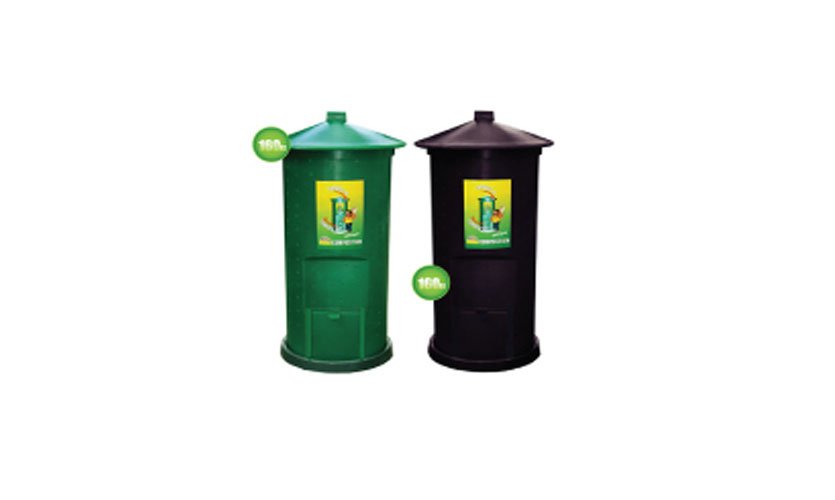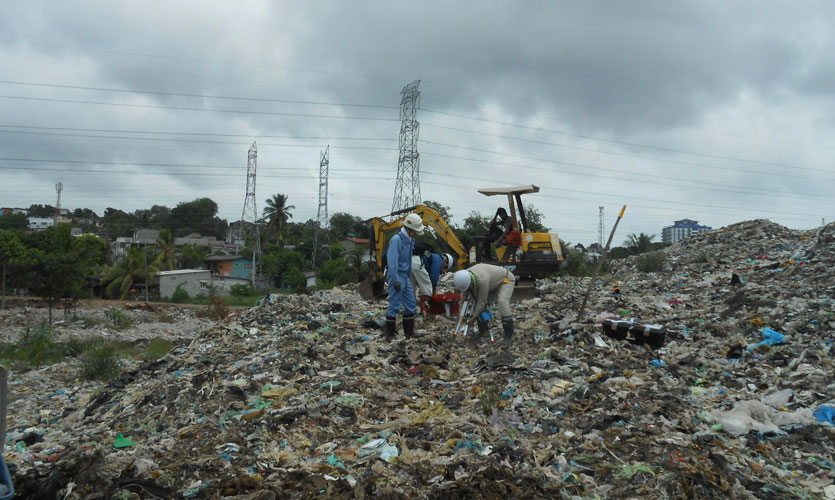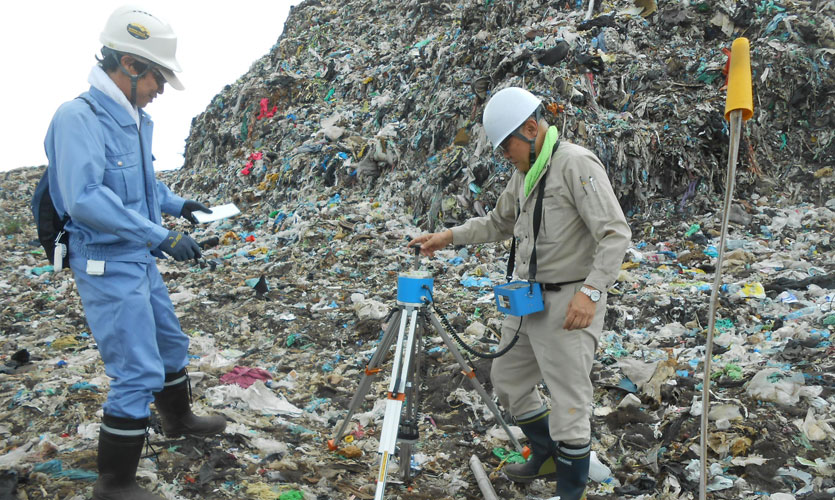Sep 20 2017.
views 4293Reduce, Reuse, Recycle - mantra to solve all your garbage issues!
‘Yours mine and ours, once discarded from our doorstep become theirs, Garbage!’ This lack of ownership and responsibility has become the sole factor governing myriad garbage-related complications across the country.
What really happens to our waste when it leaves our house? Is recycling still a figment of our imagination, most importantly, are we doing enough to erase all possibilities of another ‘Meethamulla-disaster’? Questions, we went in search of answers for.
The Colombo Municipal Council (CMC) is tasked with collecting garbage from approximately 160,000 houses and other organisations covering the Northern, Southern, Eastern, Western Colombo and Borella - sub divisions daily, employing over 200 lorries and trucks. The collection process is made more efficient by deploying Abans and Care Clean which take over 4 of the 6 districts, the CMC zone is divided into.

As informed as one must be about the effort, energy and resources allocated for this task, what concerns the general public the most is a thorough knowledge on ‘what’ and ‘when’ collection takes place, which inevitably completely lightens this tedious job.
Contrary to popular belief of just 2 main divisions, waste is segregated into 4 categories,
1) Bio-degradable
2) Non- bio degradable – yet recyclable (glass, cardboard, clean polythene & plastic, cleaned yoghurt cups etc.
3) Non-recyclable (used, soiled polythene, plastics, sanitary wear, rubber, razors etc.)
4) Chemical waste (bulbs, batteries and electronic gear)
Elaborate lists in multiple languages have been prepared and distributed from house to house and yet according to the Municipal Commissioner of the Colombo Municipal Council, V.K.A Anura, 40% of the residents within the Colombo municipality still fail to adhere to these very simple guidelines.

All organic waste collected is taken to a compost site in Kerawalapitiya, which produces 500 metric tons of organic fertilizer daily; recyclable waste is sold to recyclers and chemical waste can too be purchased at a fair hosted by the CMC every month. Following segregation, only the residual waste is disposed to an engineered sanitary land fill in Dompe with a storage capacity of 100 metric tons per day.
Segregation is of paramount importance and it couldn’t be stressed adequately, for this alone will lead to a remarkable reduction in waste entering a land fill each day. Having identified this, the CMC provides an incentive to employees, by allowing workers to sell recyclable waste on their own account, giving them an opportunity to earn an extra income.
Speaking to us the commissioner reiterated,
“We have found a solution to the garbage problem in the country, it all comes down to the support we get from the general public”.
The biggest hurdle faced by the authorities is the emergence of new dump sites on the sides of streets in Colombo.
“It has led to a vicious cycle”
added Mrs. N.D Wijethilake, District Engineer for solid waste management, District 3.
“We have dedicated 5 days of the week to collect all waste from your doorstep, yet we feel the lack of interest to contribute to this process leads people to dump mixed garbage (Bio degradable and not) on the sides of the streets with the hope that it’ll be cleared magically.”
In order to keep the city presentable and hazard free, the authorities do collect garbage that’s dumped carelessly, which could have been segregated, recycled and reused.
The commissioner further noted that preparations are underway to construct a power plant in Kerawalapitiya, to generate electricity using the waste in the sanitary land fill, within the next year and a half, leaving no trace of a garbage dump-yard for the future.

With ongoing development projects in the country, the surge in the amount of waste generated will continue and the seriousness of matters related to garbage disposal will be on the rise, yet, the solutions to the issues at hand are right at our fingertips.
Minimise waste
Simple steps do go a long way. You can start by switching to the use of a reusable lunch box. Whether you opt to prepare your own lunch or take out, offer your own lunch box at the counter.
Invest in a reusable bag for your daily grocery shopping. After all a single bag of polythene takes 10-1000 years for complete decomposition. (let that sink in)
Segregate, Segregate and segregate
Separate your kitchen waste, garden waste from the rest. The Colombo Municipal Council provides a compost bin completely free of charge with an additional manual and maintenance assistance. If you have nothing to give to the compactor truck collecting bio degradable waste three times a week, you’re a winner!
Lastly, be a little humane
Every time you dump a bag of unsegregated garbage, workers of the Municipal Council will have to sort your waste manually and that surely isn’t a pleasant job. Imagine a reversal of roles, would you enjoy sorting through your own rotten bag of garbage! Let this thought cross your mind, and you won’t take the easy way out.
Prepare your own compost fertilizer
-Place the compost bin in close proximity to your kitchen.
-Add 2-3 inches of soil or saw dust to the base.
-Next add dry leaves or grass.
-Now start adding kitchen waste over it.
-Mix kitchen waste with dry leaves immediately after adding to the bin.
-Use a long stick to mix the contents, once a week, in order to avoid the generation of an unpleasant odour.
-Control the humidity of the contents by adding water or dry leaves.
-Avoid adding items such as wood, metals, infected plants, coconut husks, rocks, animal or human faces, tree barks/twigs etc.
* in less than three months you can obtain home-made compost fertilizer from the outlet at the base.
*Do make note to always keep the lid closed.
8 Comments
sigiriya says:
Sep 22, 2017 at 08:55 amThis is a good article
ET says:
Sep 26, 2017 at 02:59 pmCam CMC or UDA please define the colours for each garbage type ? We can have bags of that colour for easy identification then.
Tissa says:
Sep 30, 2017 at 10:53 amMake your own compost and use the "Garby" concrete plate bin which I developed in 1999 and got The SLAAS (Sri Lanka Association for Advancement of Science) environmental award and Presidential Innovators award. "Garby" coined Garbage in your own Back Yard. But the CMC as well as CEA was not interested at that time due to corruption in their purchasing. We distributed 4000 units direct to households under UNDP assistance. The plastic bins will last a very short time compared to concrete bin. Tissa De Silva Chartered Engineer. Environmental Association Kalubowila .
Upul says:
Oct 02, 2017 at 05:58 amCMC commissioner don't hide your inefficiency by putting the blame on the people, do a proper job, or quit the job and leave for someone who can handle, without messing it the life's of the Colombo people. Please.
Malaka says:
Oct 02, 2017 at 06:06 amIts a curse, the CMC and the government, its very easy to remove all the garbage bins or hide them, and putting police to punish people and say garbage problem solved. SO WHERE ON EARTH A TRAVELLER PUT THEIR GARBAGE, ALL THE BINS ON THE ROAD ARE HIDDEN NOW. THE OTHER DAY I HAD TO PUT THE EMPTY MILO MILK PACKET IN MY TROUSER AND TAKE IT HOME FROM FORT TO MAHARAGAMA AS YOU DON'T FIND ANY BINS ON MY WAY. ITS DISGUSTING THIS GOVERNMENT HANDLING THINGS.
Punitham says:
Oct 04, 2017 at 08:09 amCEA l ask Ministry of Education to translate(you may also translate ) and send this article to all schools.
mahinda says:
Oct 06, 2017 at 05:54 pmMinisters look like garbage twice the size we saw two years ago.
jonm says:
Jan 10, 2018 at 01:53 pmI love it produce more please